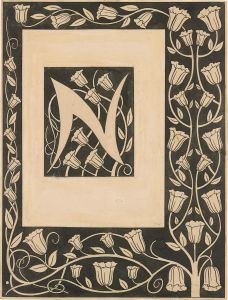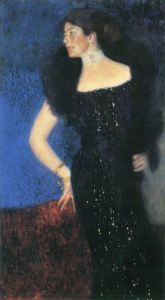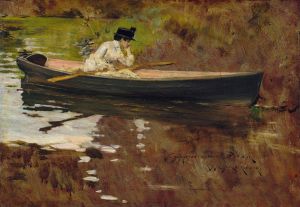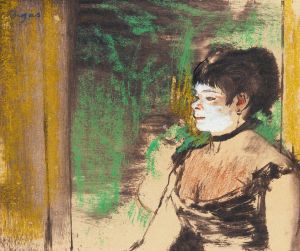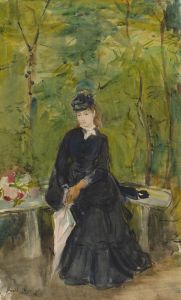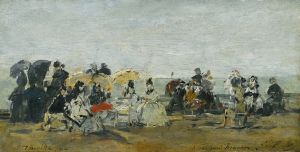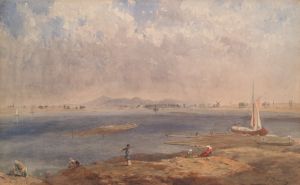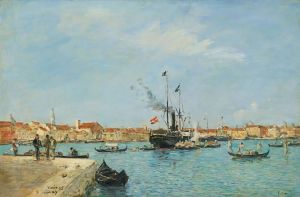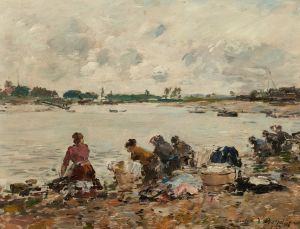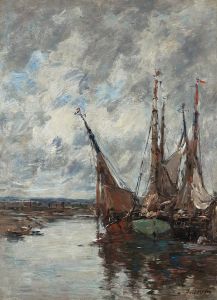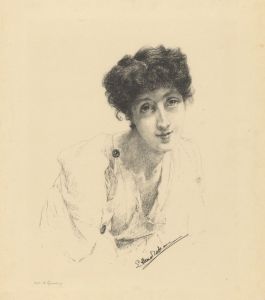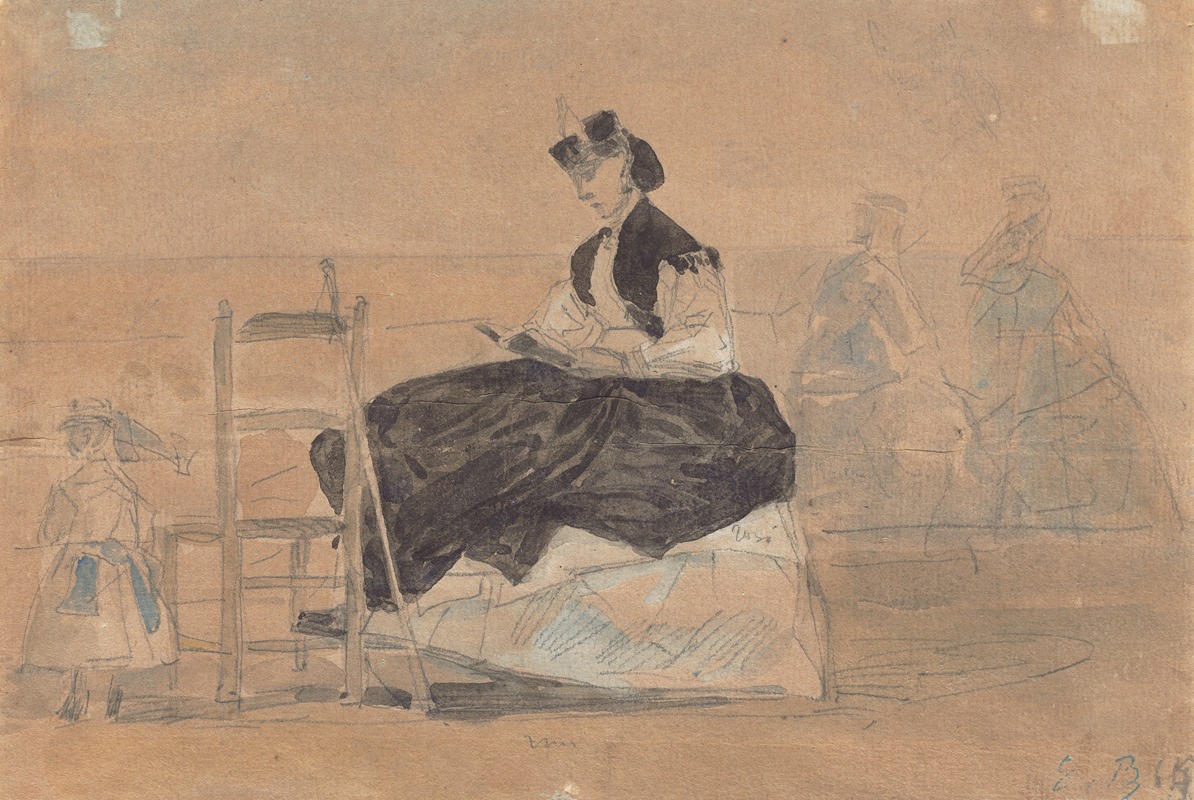
Woman in a Crinoline on the Beach of Trouville
A hand-painted replica of Eugène Boudin’s masterpiece Woman in a Crinoline on the Beach of Trouville, meticulously crafted by professional artists to capture the true essence of the original. Each piece is created with museum-quality canvas and rare mineral pigments, carefully painted by experienced artists with delicate brushstrokes and rich, layered colors to perfectly recreate the texture of the original artwork. Unlike machine-printed reproductions, this hand-painted version brings the painting to life, infused with the artist’s emotions and skill in every stroke. Whether for personal collection or home decoration, it instantly elevates the artistic atmosphere of any space.
Eugène Boudin's painting Woman in a Crinoline on the Beach of Trouville is a notable example of the artist's dedication to capturing the leisurely seaside culture of 19th-century France. Boudin, born in 1824 in Honfleur, Normandy, is widely regarded as one of the precursors of Impressionism. His works often depict coastal scenes, particularly those of fashionable vacationers enjoying the beaches of Normandy, a popular destination for the French bourgeoisie during this period.
This painting portrays a woman dressed in a crinoline, a type of structured petticoat that was fashionable in the mid-19th century, standing on the beach at Trouville-sur-Mer. Trouville was one of the earliest seaside resorts in France and became a favored retreat for the upper classes. The woman’s attire reflects the social norms and fashion of the time, emphasizing elegance and refinement even in a casual, outdoor setting.
Boudin's technique in this work demonstrates his mastery of light and atmosphere, elements for which he is particularly celebrated. The artist was known for his ability to capture the transient effects of weather and light on the sea and sky, and this painting is no exception. The soft, diffused light suggests a calm day by the shore, while the muted tones evoke a sense of tranquility. The composition focuses on the figure of the woman, but the surrounding beach and sky are rendered with equal care, creating a harmonious balance between the human presence and the natural environment.
Boudin's beach scenes, including this one, were groundbreaking in their time. They marked a departure from the grand historical and mythological themes that dominated academic painting, instead celebrating contemporary life and the beauty of ordinary moments. His work had a significant influence on younger artists, including Claude Monet, who credited Boudin with encouraging him to paint en plein air (outdoors) and to observe nature directly.
The exact date of Woman in a Crinoline on the Beach of Trouville is not definitively documented, but it likely falls within the 1860s, a period when Boudin produced many of his beach scenes. The painting exemplifies his ability to blend realism with a poetic sensibility, capturing both the physical details and the ephemeral mood of the scene.
Today, Boudin's works, including this painting, are celebrated for their role in the development of modern art. They are housed in various collections worldwide, though the specific location of this particular piece may vary depending on exhibition arrangements. Boudin's legacy endures as a pioneer who bridged the gap between the Realist and Impressionist movements, and his beach scenes remain a testament to his innovative vision.





